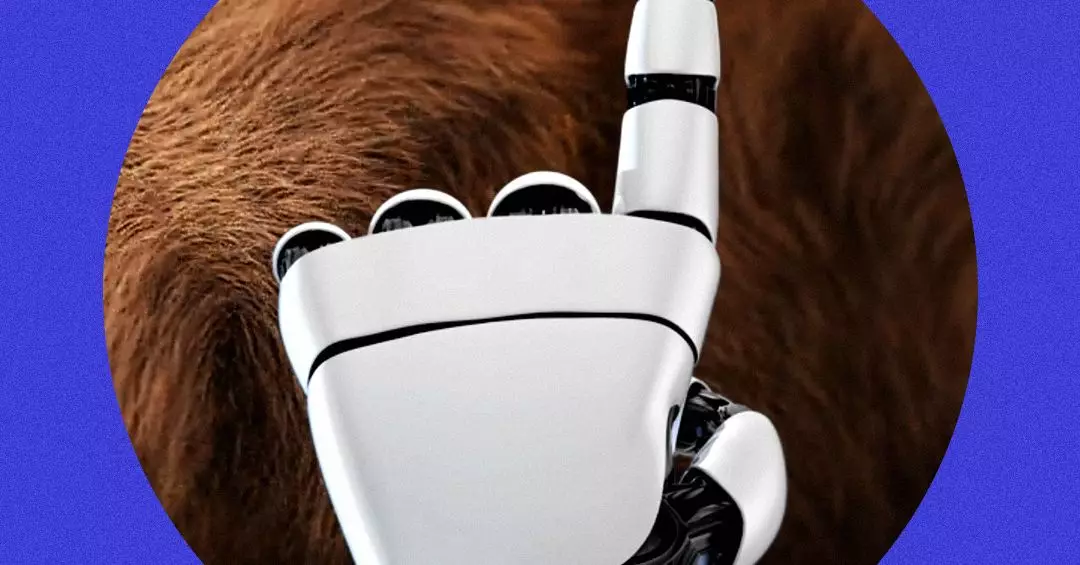In the realm of logistics and warehouse management, the introduction of groundbreaking technology often heralds a significant shift in efficiency and cost-effectiveness. Amazon’s latest warehouse robot, named Vulcan, is an impressive leap in that direction. Unlike its predecessors, which struggled with nuanced tasks, Vulcan has been designed to employ touch-based navigation, enabling it to effectively rummage through shelves to locate specific products. This innovation represents a vital step in bridging the gap between human dexterity and robotic efficiency—a frontier that has long been the Holy Grail of automation.
Vulcan embodies a remarkable convergence of technology and engineering, enriched by machine learning algorithms that interpret tactile signals. Its custom spatula-like appendage and suction capabilities allow it not only to identify the target item but also to manipulate its surroundings with a finesse that many robots have traditionally lacked. As Amazon’s director of robotics AI, Aaron Parness, insightfully points out, the tactile feedback from the robot plays a crucial role in navigating the often-chaotic environments of fulfillment centers. This innovation is much more than a shiny new gadget; it is a practical solution to a longstanding problem—how to streamline order fulfillment without overwhelming human workers.
Human-Robot Collaboration: A New Paradigm
The implementation of Vulcan marks a significant evolution in the relationship between human workers and machines. Positioned to work alongside human pickers, the robot’s capabilities aim to alleviate the physically taxing aspects of warehouse work. By taking on the more strenuous and repetitive tasks, Vulcan allows human workers to focus on roles that require strategic thinking and adaptability. This collaborative model showcases a future where human intelligence and robotic efficiency are not adversaries but allies, each complementing the other’s strengths.
Yet, it is essential to recognize that while Vulcan demonstrates impressive innovation, it also highlights the limitations currently facing robotic technology. The human sense of touch is intricate, nuanced, and can respond to varying conditions with a sophistication that machines are still striving to replicate. Roboticist Ken Goldberg aptly notes that the road to achieving human-equivalent tactile sensitivity is long and fraught with challenges. Nevertheless, Vulcan’s emergence suggests that a partnership approach—with humans guiding and correcting robotic actions—may indeed be the way forward for industries where precision and adaptability are paramount.
Pushing the Boundaries of Machine Learning
At the heart of Vulcan’s operation is sophisticated machine learning technology, a core reason many observers are excited about its potential. Parness emphasizes that the “special sauce” lies within the software’s ability to interpret complex sensor data, feeding back into the control loop to enhance operational efficacy continually. This kind of adaptive learning architecture could serve as a model for future developments in robotic capabilities, not just in warehouse settings but across various sectors.
However, while machines are rapidly advancing, the notion of complete automation remains contested. Parness himself acknowledges this reality, asserting that Amazon does not aspire to an entirely automated (“lights-out”) fulfillment model. This perspective recognizes the irreplaceable qualities that human workers bring to the table—qualities that, for now, simply cannot be mimicked by robotics. The quest for a balanced operational model, where technology supports human effort rather than eliminates it, signals a more sustainable approach to automation.
The Road Ahead: Ethical Considerations and Evolution
As exciting as Vulcan’s capabilities are, they also necessitate a broader discussion on the ethical implications of increased automation in labor markets. Concerns about job displacement have long haunted the conversation around technological advancement. Will robots like Vulcan create a more efficient system, or will they put workers out of jobs? This anxiety is multi-faceted and has pushed companies to consider the roles that humans will play in increasingly automated environments.
The evolution of partially automated systems could promise a more adaptable workforce, where human skills are leveraged to manage and interact with robotic systems, enhancing productivity without compromising employment. As automation continues to gain momentum, a sharp focus on retraining and upskilling will be essential to prepare workers for the evolving landscape ahead.
Vulcan is not just a technological marvel but a beacon for what is possible in the future of warehouse operations. As Amazon continues to innovate within its fulfillment centers, the world watches closely, contemplating not just the efficiencies these robots bring, but the larger questions around humanity’s role in an increasingly automated society. With Vulcan, we stand at the precipice of a new era—one where collaboration between human intellect and robotic efficiency might redefine the boundaries of what we thought possible.


Leave a Reply